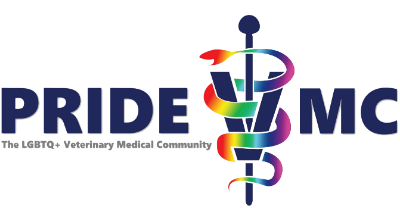Right to Safety
Right to Safety
Author: Ewan Wolff, PhD, DVM, DACVIM
Review: Mia Cary, DVM
From the GIBOR
“Transgender, non-binary, and gender non-conforming individuals should be able to have personal safety within work, teaching, and learning environments. Transgender, non-binary, and gender non-conforming individuals should be able to use restrooms and changing rooms that correspond to their identity at their chosen pace. Additionally, gender neutral restrooms should be available when logistically feasible for those who wish to use them. Signage should be altered to be non-discriminatory on gender neutral restrooms (e.g. triangle sign).”
Importance
Gender diverse people, in particular BIPOC transwomen, are disproportionately affected by violence including assault and murder. In order to exist within the veterinary profession, gender diverse people need safety. It is a normal expectation of cisgender people to be able to go to school, to work, and participate in all activities as their gender identity and without random or anticipated threats to their life and livelihood. Adjustments for the safety of cisgender people are already common including limiting website information, building security, key card access, divided bathrooms/changing rooms, single use restrooms, and single use changing rooms. Because gender diverse people are human beings, it is reasonable and rational to expect similar accommodations.
Historic Precedence
This current time period is one of attempted and successful great limitations of freedom by state governments/governors and health departments for gender diverse people including restroom and changing room access. These limitations have a direct safety impact not on the cisgender population, but instead on the gender diverse population because they are directly threatened by these changes.
Legal Precedence
This is an area of consistent shifting information. The following information may be of use:
- Transgender Healthcare Shield Laws: https://www.lgbtmap.org/equality-maps/healthcare/trans_shield_laws
- OSHA transgender bathroom guide: https://www.osha.gov/sites/default/files/publications/OSHA3795.pdf
- LA Times – Transgender safe havens https://www.latimes.com/politics/story/2023-08-11/transgender-safe-haven-shield-laws-refuge-states
- Human Rights Violations Against Transgender Communities in the Us (Human Rights Watch): https://www.hrw.org/news/2023/09/12/human-rights-violations-against-transgender-communities-us
Impacts of Harm
If there is no safety for transgender, non-binary, and gender non-conforming people in the profession then there are several anticipated impacts:
- We will either rapidly lose gender diverse people from the workforce or they will not come in the first place.
- We may lose gender diverse people to self harm if they are not protected from harm and given gender appropriate spaces.
- If we do not work to provide safety then gender diverse people may be exposed to mental and physical violence.
Individual Action
- Ask gender diverse people what they need to be safe.
- If you see a member of staff/colleague/fellow student, etc. who is gender diverse and appears uncomfortable, ask them if they are ok and what they need.
- Share spaces with gender diverse people including gender appropriate restrooms and changing areas.
- If you notice someone who is at direct risk of harm, intervene if it won’t create additional victims, and get immediate help.
- Don’t share people’s personal information with others.
- Don’t out anyone or force people to provide you with explanations.
Implementation
- Train people at your organization not only in inclusion of gender diverse people but also in how to keep people safe.
- Include gender diverse voices in decision-making processes.
- Follow individual concerns around privacy.
- Have a building safety plan for violence.
- Make sure that security systems are present.
- Protect gender diverse people from escalating discriminatory situations.
- Provide gender neutral restrooms.
- Provide gender neutral changing spaces.
- Allow gender diverse people in spaces corresponding to their gender.
- Enforce use of names and pronouns.
Consequences of Violation
If a violation of safety happens between members of an organization then community security or the police should be contacted depending on the severity of the violation. Additionally, organizations should have policies in place related to harassment, discrimination and violence in the workplace. Social workers should be engaged to help with the after effects of the incident. The affected gender diverse person should be asked how to improve upon safety in the aftermath of a problem and the party/parties involved in creating an unsafe environment should receive discipline and additional training if the violation is minor and more intervention as indicated by law.
If violation of safety happens from an individual outside the organization or a client then all of the above applies (with the exception of internal mechanisms) and additional steps should be taken to prevent additional contact and future potential for harm.
Additional Resources
1) Violence against trans and non binary people (Violence Against Women) https://vawnet.org/sc/serving-trans-and-non-binary-survivors-domestic-and-sexual-violence/violence-against-trans-and
2) Know Your Rights (Transgender Law Center) https://transequality.org/know-your-rights
3) Safe LGBTQ Travel Article (Forbes) https://www.forbes.com/sites/laurabegleybloom/2023/06/27/new-lgbtq-safety-report-ranks-trans-friendly-travel-destinations/?sh=b68e2da29300
Contact Us
We want to hear from you. Please contact us with any questions, suggestions or inquiries.
©2023 PrideVMC | 584 Castro Street, #492 | San Francisco, CA 94114, USA
